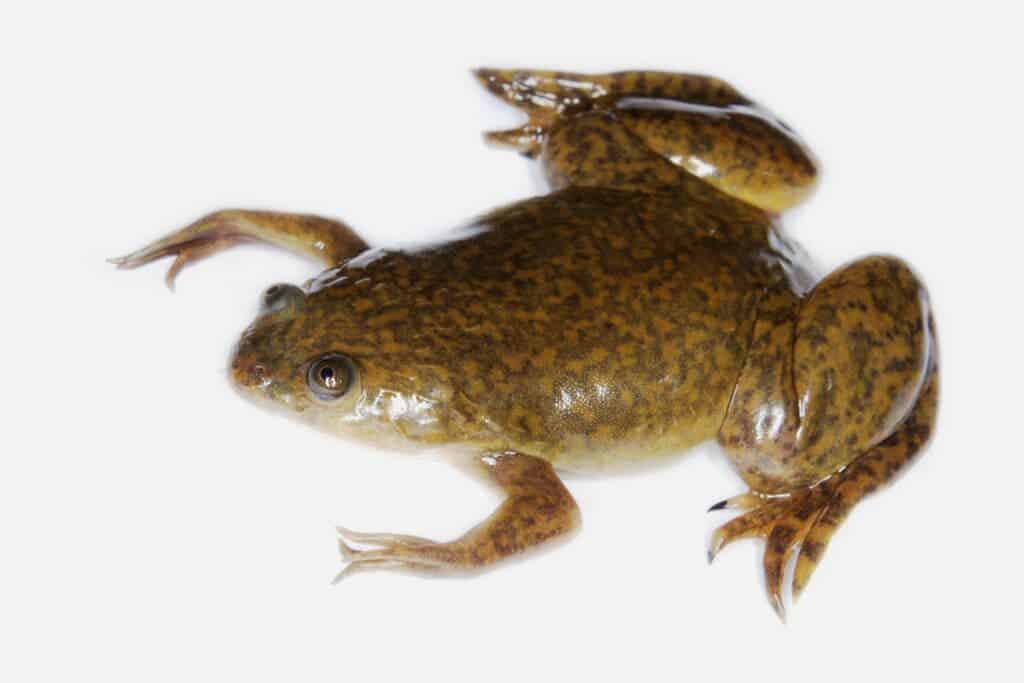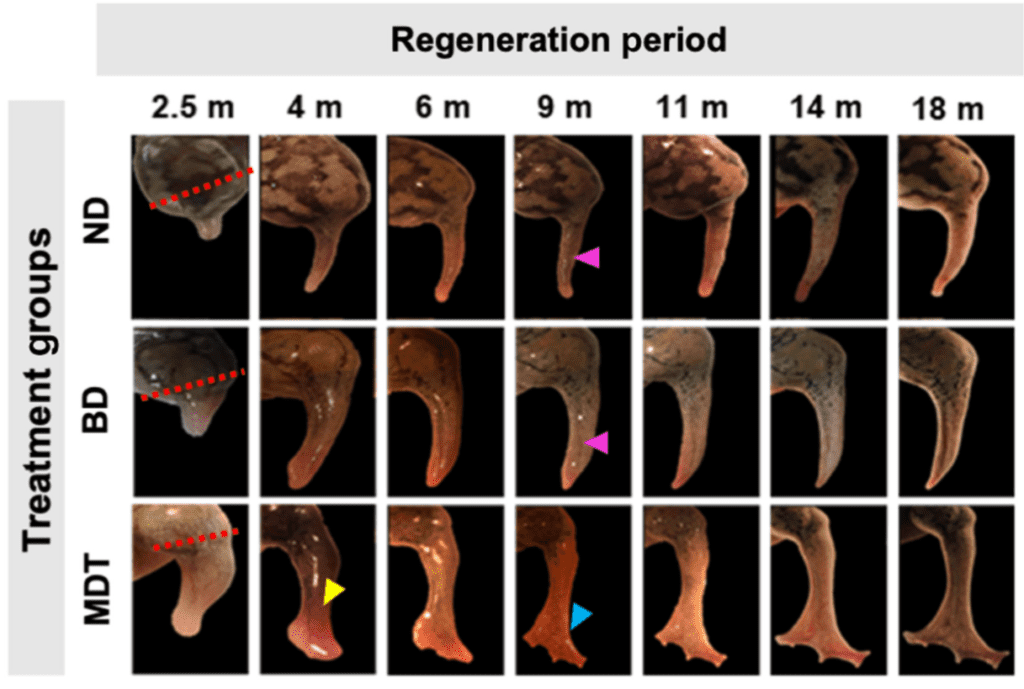Most animals have pretty good injury repair capabilities, but when it comes to lost limbs, only a select few can regrow them. The rest, including humans, have little they can do to repair such injuries. But as a new study shows, with the right treatments, our bodies may be hacked and “convinced” to regrow lost limbs. Although the study focused on frogs, which are obviously very different from humans, the proof-of-concept study suggests that this approach could work on many animals, including humans.

Limb regeneration is a new frontier in biomedical science. It’s something we’ve long considered outside the realm of possibility, restricted only to superheroes and myth, but research is bringing it closer and closer to reality.
While many things differentiate humans from frogs, neither we nor they are able to regenerate limbs. So researchers at Tufts University and Harvard University’s Wyss Institute used frogs (specifically, the African clawed frog or Xenopus laevis) as a proof of concept. X. laevis is often used in research as it is easy to handle, lays eggs throughout the year, and for a model organism, shares a close evolutionary relationship with humans.
The researchers triggered the regrowth of a lost leg using a five-drug cocktail that they applied in a wearable silicone bioreactor dome that sealed the drugs over the stump for just 24 hours. After the treatment was administered, the regenerative process was kickstarted, and over the course of an 18-month period, the frogs regrew an almost fully functional leg.
“It’s exciting to see that the drugs we selected were helping to create an almost complete limb,” said Nirosha Murugan, research affiliate at the Allen Discovery Center at Tufts and first author of the paper. “The fact that it required only a brief exposure to the drugs to set in motion a months-long regeneration process suggests that frogs and perhaps other animals may have dormant regenerative capabilities that can be triggered into action.”
The experiment was repeated on dozens of frogs, and while not all of them regrew limbs, most did — including bone tissue and even toe-like structures at the end of the limb (though these weren’t supported by bone). It’s not a magic elixir, and the treatment is not perfect, but the drug cocktail delivered through the wearable bioreactor really does seem capable of regrowing limbs.

The researchers essentially hacked the biological pathways that enable the growth and organization of tissue — much like in an embryo. This is why the treatment was only applied once, over the course of a day; meanwhile, other approaches involve numerous interventions over the course of the process.
“The remarkable complexity of functional limbs suggests that the fastest path toward this goal may lie in triggering native, self-limiting modules of organogenesis, not continuous micromanagement of the lengthy process at the cell and molecular levels,” the researchers write in the study. “We implemented this via a short exposure of limb amputation wounds to a wearable bioreactor containing a payload of five select biochemical factors.”
The first stage is the formation of a mass of stem cells at the end of the stump, which was then used to gradually reconstruct the limb. It’s essential that this structure is covered with the dome as quickly as possible after amputation to ensure its protection and activation. This treatment would be ideally applied right after amputation.
“Mammals and other regenerating animals will usually have their injuries exposed to air or making contact with the ground, and they can take days to weeks to close up with scar tissue,” said David Kaplan, Stern Family Professor of Engineering at Tufts and co-author of the study. “Using the BioDome cap in the first 24 hours helps mimic an amniotic-like environment which, along with the right drugs, allows the rebuilding process to proceed without the interference of scar tissue.”
At first, researchers tried using the protective dome with a single drug, progesterone. Progesterone is a steroid hormone involved in the menstrual cycle, pregnancy, and embryogenesis of humans and other species. This alone triggered some limb growth, but the resulting limb was essentially a non-functional spike. Each of the other four drugs fills a different role, ranging from reducing inflammation and the stopping of scar tissue formation to the promotion of growth of new nerves, blood vessels, and muscles. It’s the combination of all these together that leads to a nigh-functional limb.
Researchers note that while the limbs weren’t 100% identical to “normal” limbs, they featured digits, webbing, and detailed skeletal and muscular features. Overall, the results show the successful “kickstarting” of regenerative pathways
The plan now is to move on to mammal research. Despite the differences between frogs and mammals, researchers say that the biggest difference lies in the “early events of wound healing” — if these early processes can be understood and replicated, then there’s no apparent reason why this couldn’t be applied to mammals, and ultimately humans as well.
“The goal of triggering latent tissue-building routines to regrow limbs in humans may be achieved by identifying and exploiting principles observed in highly regenerative organisms,” the researchers conclude.
The study was published in the journal Science Advances.






